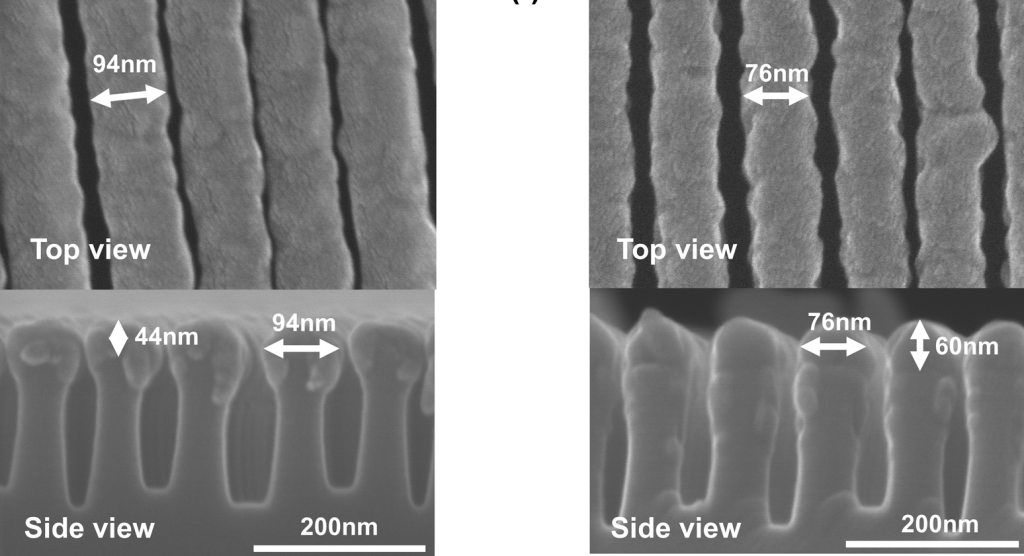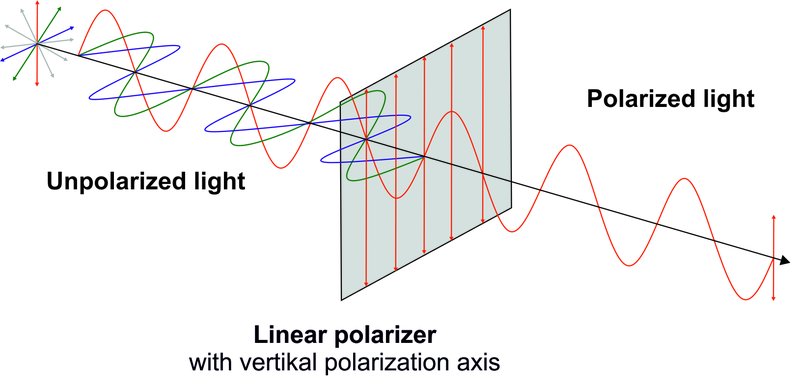3D Printing Industry is currently seeking feedback on resin 3D printing. Send your insights now and take the Spotlight on Resin 3D Printing Survey.
Researchers from the University of Texas at Austin and Lawrence Livermore National Laboratory are investigating the use of metal wired grid polarizing filters in resin-based 3D printers.
The wired grid polarizers are designed to replace the conventional PVA film polarizers used in monochrome LCD screens, the component which generates the patterns for printing individual layers. Early testing has shown that the new wired grid polarizers offer a significantly higher light transmission efficiency when compared to their film counterparts.
In the context of LCD 3D printing, the increased transmission efficiency results in a higher intensity of UV light, shorter print times, a greater UV penetration depth (thicker layers), and a wider curing surface.

PVA film polarizers versus wired grid polarizers
In projection micro stereolithography (PμSL), a spatial modulator is used to project UV light across the entire area of the build plate, allowing PμSL-based 3D printers to cure entire layers at once. The spatial modulator can take the form of an LCD, liquid crystal on silicon (LCoS), or a digital micromirror device (DMD).
While PμSL is generally faster than spot laser-based SLA, it does have its limitations. For instance, projecting UV light from a small-scale spatial modulator chip calls for a high magnification factor, which reduces the light intensity as the surface area increases.
Furthermore, conventional LCDs feature two orthogonal film polarizers that allow UV light to pass through in certain areas. The mechanism at work here is absorption-based, whereby electrical fields in the films absorb light that is parallel to them but transmit light that is perpendicular. This conventional approach works but also reduces the effective intensity of the light engine.
To address the issues associated with film polarizers, it’s possible to use wired grid polarizers instead. Much like films, wired grid polarizers absorb parallel light but transmit perpendicular light, except they operate on a scatter mechanism rather than an absorption one. As well as resulting in higher transmission efficiency, metal wire grids can also withstand much higher light intensities without sustaining damage.

Towards a higher transmission efficiency
To test the effectiveness of the wired grid polarizers, the US researchers compared them to both color and monochrome LCDs with stretched PVA polarizers. Each of the devices was used to 3D print silicone resin parts at a variety of UV wavelengths and light intensities.
The team found that the transmission efficiency of the PVA film polarizers decreased significantly at shorter wavelengths, while the wire grid polarizer transmitted more UV light at each wavelength. The difference between the film and wire grid performances was most pronounced at wavelengths of below 400nm.
Looking at the figures, for wavelengths of 365, 385, 405, and 450nm, the film polarizers offered a transmission efficiency of 0.0%, 1.1%, 22.9%, and 34.8%. For the same wavelengths, the wire grid polarizers delivered 34.4%, 39.3%, 39.1%, and 42.5%.
Ultimately, the results showed that the use of wired grid polarizers lent itself to higher output intensity, a higher damage threshold, greater resin compatibility, and overall improved printing performance, demonstrating their feasibility in UV LCD 3D printers.
Further details of the study can be found in the paper titled ‘Use of wire grid polarizers with liquid crystal display for large-volume stereolithography’.
Since its invention, SLA 3D printing has come a long way thanks to advancements in hardware. Just last year, In-Vision, an Austria-based developer of high-precision optical devices, launched its first 4K UV light projector for use with resin-based 3D printers. Named Phoenix, the high-performance light engine is designed specifically for applications that require high light intensities and rapid cure times.
There’s also something to be said about advancements in materials science, as new and improved 3D printing resins are constantly unlocking previously impossible applications. Recently, 3D printer manufacturer B9Creations launched a new line of resins that it says can be used to create injection molding-quality plastic molds. Included in this ‘Robust’ range is an ABS and polycarbonate (PC) material that features a high heat deflection temperature (HDT), making it ideal for producing smooth, impact-resistant molds.
Subscribe to the 3D Printing Industry newsletter for the latest news in additive manufacturing. You can also stay connected by following us on Twitter, liking us on Facebook, and tuning into the 3D Printing Industry YouTube Channel.
Looking for a career in additive manufacturing? Visit 3D Printing Jobs for a selection of roles in the industry.
Featured image shows elastic lattice structures 3D printed using EPU41 resin on a Carbon M2 system. Photo via RPM.


